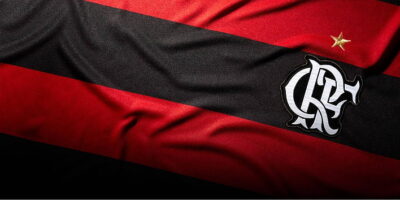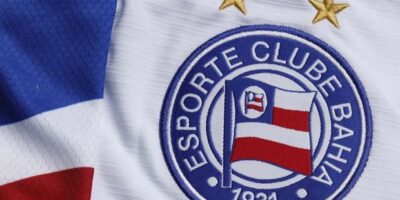For the Brazilian, I will count games since his debut in official competitions (04/26/1957 against São Paulo – He was 17 years old) until the last official Santos game before Pele turned 30 (10/23/1968 against Internacional. For the Argentinian, I will count games since his debut in official competitions (10/16/2004 against Espanyol – He was 17 years old) until the last Barcelona official game (05/13/2015 against Bayern Mûnchen).
Santos with Pelé:
Pelé’s Santos shone all over the world and are rightfully ranked among the best teams of all time. The “white ballet” had the attack line that is be recited as poetry: “Dorval, Mengálvio, Coutinho, Pelé e Pepe”.
With its great “King” on the field in that period, Santos played 436 official games with 295 wins (67.66%), 76 draws (17.43%) and 65 defeats (14.9%). The “time da vila” (Vila Belmiro – Santos’s stadium) scored 1285 (2.94 per game) and suffered 552 goals (1.26 per game).
In those games, the Brazilian scored incredible 529 goals in a 1.21 goal per game average. He was responsible for 41.16% of Santos’s goals and for 28.79% of the total goals scored in all matches.
The “santista” team got a 2.20 point per game average. Taking in comparison the last five editions of the Brazilian League, if they kept that average, Santos with Pelé would have about 83 points and would comfortably win it every year:
3 more points than the champs Cruzeiro in 2014; 7 more points than champs Cruzeiro in 2013; 6 more points than champs Cruzeiro in 2012; and 12 more points than champs Corinthians and Fluminense in 2011 and 2010.
Santos wihout Pelé.
It is well known the quality of Santo’s players in its golden years. Pelé played in different moments with great footballers such as Zito, Gylmar, Coutinho, Pepe, Edu, Carlos Alberto Torres, among others. However, did Santos have the same success without the “King”?
Santos in that time period played 121 games, divided into 67 wins (55.37%), 19 draws (15.70%) and 35 defeats (28.92%). The Villa’s team scored 287 (2.37 goals per game) and suffered 179 goals (1.47 per game).
The “Santista” team had a 1.81 points per game average. Taking in comparison the last five editions of the Brazilian League, with that average, Santos without Pelé would have about 68 points and would be: 5th in 2014; 2nd in 2013; 4th in 2012 and 3rd in 2011 and 2010.
Conclusion on Pelé’s effect on Santos.
As you can see, without Pelé, Santos would change from a dominating champion to contender for a spot in the Libertadores (the first four teams earn a place at the continental cup). With the “King”, they improved their points by 21.54%; won and tied more games (respectively 67.66 against 55.37% and 17.43 against 15.70%) and significantly reduced their defeats (14.9% against 28.92%). Furthermore, Santos with Pelé also increased the numbers of goals scored (2.96 against 2.37 per game) and suffered (1.26 against 1.47 per game).
Barcelona with Messi.
Messi’s Barcelona has likewise shone all over the world and they are rightfully so ranked among the best teams of all time. The team of the “Tik Taka” continues to dominate until today.
With its Argentinian genius on the field, Barça has played 478 official games divided in 338 victories (70.71%), 87 draws (18.20%) and 53 defeats (11.09%). The team from Cataluña has scored 1192 (2.49 per game) and suffered 399 goals (0.83 per game).
In those matches, Messi has scored incredible 407 games in a 0.85 goal average. He was responsible for 34.14% of Barcelona’s goals and for 25,58 of the total goals of the games.
The catalan club has had a 2.30 points per game average. Taking in comparison the last five editions of the Brazilian League, with that average, Barça with Messi would have about 87 points and would very comfortably win it every year:
7 more points than Cruzeiro in 2014; 11 more points than Cruzeiro in 2013; 10 more points than Fluminense in 2012; and 16 more points than Corinthians and Fluminense in 2011 and 2010.
Barcelona without Messi.
It is well known the quality of Barcelona’s players in this historic run. Messi played in different moments with great footballers such as Ronaldinho, Henry, Eto’o, Neymar, Xavi and Iniesta, among others. Nevertheless, has Barcelona had the same success without “La Pulga”?
“Barça” on that period has played 146 games, divided in 87 wins (59.59%), 34 draws (23.29%) and 25 defeats (17.12%). They have scored 295 (2.02 per game) and suffered 122 goals (0.83 per game).
The catalan team has had a 2.02 points per game average. Taking in comparison the last five editions of the Brazilian league, with that average, Barcelona without Messi would have about 76 points and they would be champions in 3 of the last 5 years: 2nd in 2014; tied at 1st place with o Cruzeiro in 2013; 2nd in 2012; and 1st in 2010 e 2011.
Conclusion on Messis’s effect on Barcelona:
As you can see, without “La Pulga”, Barcelona would go from a dominant champion to a title contender in every year. With him, they increase their points by 13.86%; win more (70.71% against 59.59%), tie and lose fewer games (respectively 18.20 against 23.29% and 11.09 against 17.12%). Furthermore, “Barça” with Messi also improves their number of goals scored (2.49 against 2.02 per game); however they suffer the same amount of goals (0,83 per game).
Conclusion on Pelé x Messi on their clubs:
In a tight race, Pelé keeps his crown. The Brazilian player has a large advantage in total and average of goals per game. As to percentage of goals of his team and total scored in games played, (a more fair comparing tool because of the bigger amount of goals in the 50’s and 60’s), the Argentinian shows his genius and comes close, but fails short of reaching Pelé.
The great footballer from Santos also showed to be more important to his team (Santos was more dependent on Pelé than Barça on Messi). In addition, important to notice that Lionel impacts only the offensive part of the game, while Pelé, besides influencing Santo’s attack, likewise, maybe because of his physical strength and better defensive skills, improves his team defensive numbers.
The underrating of Pelé’s feats because of the so-called low quality of his opponents cannot prevail. Brazil lived its golden era and used to dominate world football. Every single Brazilian World Cup champion played in his home country. In addition to that, even small clubs cannot be dismissed; teams like “Comercial de Ribeirão Preto”, “Portuguesa” and “XV de Novembro de Piracicaba” had European tours with respectable results; and also had great players (like Djalma Santos, the legendary right back who defended Portuguesa when playing in the 1958 World Cup winning Brazil).
See below a comparative chart of the final individual numbers of both geniuses on their clubs:
Next:






1 Pingback